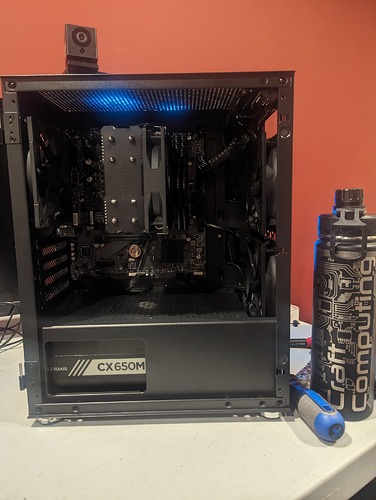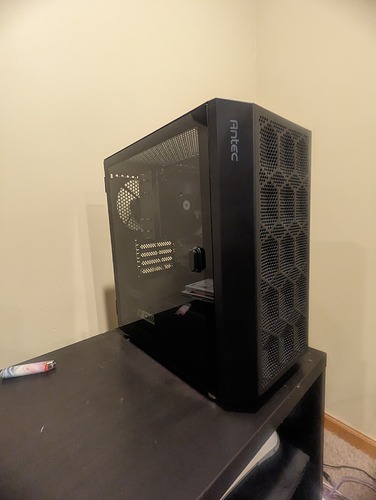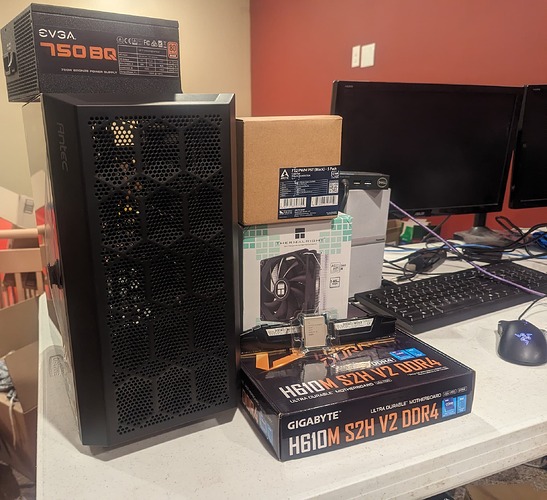Ok thanks. Is there much benefit to something newer like a 12th gen? No speical codecs needed, but as much as a tell people to not transcode 4k…it always seems to happen
There’s no difference. Unless you have needs of the newer codecs, they’ll all perform about the same. And there’s ways to not ‘let’ 4k transcode happen. We still recommend not doing it. It’s unnecessary heavy lifting and there are still issues last I checked, like color accuracy.
Ok cool. Thank you for all the info, much appreciated.
For local use, transcoding 4k in 2023 is easy. Just need an 8th gen i5 or greater from my experience.
If you’re transcoding for remote use, I have no opinion.
There’s no reason to transcode 4k for local use.
Hi there, just stumbled upon this great guide! I have one question I couldn’t seem to find an answer to - for Intel Quick Sync, does the resolution of the dummy plug have any impact on what you are able to transcode?
I would like to transcode 4K, but 4K displayport dummy plugs are way more expensive than just 1080p ones where I am…
Thanks!
Easier solution - just don’t transcode 4K at all
Here is a recent build I did for Plex hardware transcoding
CPU: Celeron G6900
CPU cooler: Thermalright Assassin X120 Refined SE
Motherboard: Gigabyte H610M S2H v2 DD4
Memory: G Skill Ripjaws 2X8GB DDR4 3200
M.2: Intel Pro 7600p 256GB
Case: Antec NX200M
Fans: Arctic F12 PWM
Power supply: Corsair CX650M
OS: Ubuntu 22.04 LTS
Good look! Is there anything that that CPU won’t transcode well?
Hello I want to get a plex server that can also hold all my media. maybe also use it as a steam cache. I dont plan on having a lot of people using the server at once I would like one with good and fast transcoding I plan on having all my media in AV1 for best compression. most of the time the stuff will be direct played but for the times im away from home I would like fast transcoding for 4k hdr content.
Here’s how I modified Mthrboard’s guide to Auto-Mounting filesystems in Linux to work for Windows shares using SMB/CIFS. My numbering matches up with Mthrboard’s guide.
- First, make sure you can manually mount the Windows share and access them in Ubuntu. To get to that point, I used the first half of this guide https://linuxize.com/post/how-to-mount-cifs-windows-share-on-linux/ but stopped before the part about “Auto Mounting”. The only thing to change from that guide is what Mthrboard said: Make a new folder in
/mntcalledsmb, and mount your media directories in/mnt/smb, so/mnt/smb/tv,/mnt/smb/movies, etc. Don’t place the folders directly in/mnt.
Then install autofs, like in the Mthrboard guide
- When you edit the
auto.masterfile, instead of
/mnt/nfs /etc/auto.nfsdb --timeout=0 --browse
use this as the last line instead:
/mnt/smb /etc/auto.cifs-shares --timeout=0 –browse
And then save the file.
Next, instead of creating a file
/etc/auto.nfsdb
create the file:
/etc/auto.cifs-shares
In that file, make a separate line for each of your shared media directories similar to the Mthrboard guide but remove timeo=100 and noatime as they don’t exist in SMB, and change the format of your remote machine’s IP address:
films -fstype=cifs,ro,iocharset=utf8,credentials=/etc/win_cred,file_mode=0644,dir_mode=0755 ://192.168.1.201/Films
tv -fstype=cifs,rw,iocharset=utf8,credentials=/etc/win_cred,file_mode=0777,dir_mode=0777 ://192.168.1.201/TV
films or tv is the name of each of your linux media folders you created inside /mnt/smb
ro should be rw if you use plex DVR, and I had to change file_mode and dir_mode to 0777.
The credentials directory should be wherever your windows username and password are stored as in the link in step 0, which should probably stay at /etc/win_cred
The final IP address is the IP address of your remote Windows machine, and the windows shared folder name.
Add additional lines like in Mthrboard’s guide for every SMB folder you want auto-mounted, but make sure you remove timeo=100 and noatime.
- Proceed with Mthrboard’s guide.
I pieced this together using this guide around the same time as this post was made.
Let me know if it helps! Reposting this because I accidentally deleted this post.
I’ve just dropped a Quadro P2000 into roughly a NAS Killer 4.0 build:
-
CPU: Intel Xeon E3-1265L - Motherboard: Intel DQ77MK
- PSU: Cooler Master MasterWatt 550
- Case: Phanteks Enthoo Pro M
- SAS Controller: Fujitsu 9211-8i D2607
But I can’t get the SAS Controller and GPU to be on/recognised/visible at the same time. Both show up and work if the other isn’t plugged in and the SAS Controller works in the PCIe 3 x16 and the PCIe 2 x4 but if I have both in then only one works.
Any advice on what the limiting factor is and what I need to do to get this working?
Hello, I have a question regardless hevc encode quality between a 8th gen and a 12th gen Intel CPU. I know Plex don’t transcode in hevc but I usually store in that codec and the speed over software is worth it.
I read the wiki and there seems to be an increase in hevc quality after 8th gen, do you guys know if it’s a remarkable one?
I had an Intel n100 who was almost equal to current nvenc so I know 12th gen is very good.
Did I screw up by letting Ubuntu upgrade to 24.04 LTS? I had everything ticking along nicely with 22.04 LTS, but unless it’s a massive coincidence that my Plex server no longer seems to be connectable by any clients for some other reason, I think I’ve broken something, and the most recent big-deal thing I did was upgrade to 24.04 LTS.
I’m generally not a Linux guy, so I don’t have any idea what might have broken, or how to systematically diagnose the problems. I know this isn’t the thread (or maybe even forum?) for large-scale troubleshooting — at this stage I’d just like to figure out if the OS version upgrade is plausibly the culprit.
Edited to add: Found a post by Rob [CA] on the Discord channel on the same topic as this thread at 2024-09-26 17:47 that discusses an issue that’s very similar to what I’m experiencing. Going to follow along there…
Hey, I’m that Rob and it is still driving me absolutely crazy. The latest thing that is happening to me is that I can’t even open the root directory of Ubuntu. I think I’ve finally come to the conclusion that the Ubuntu machine has to be wiped and everything reinstalled. but first, I am going to try to downgrade UnRaid to 6.12.10 first. We’ll see.
Oof. Starting again from scratch sounds like a huge PITA. Hope the unRAID downgrade works!
UPDATE: [Ron Howard voice] The UnRAID downgrade to 6.12.10 works.
Not an Ubuntu problem, it seems, but rather a flaw in some component of the UnRAID 6.12.11 upgrade. Should be fixed in 6.12.14, apparently.
What component
A post in this thread on the UnRAID forums (https://forums.unraid.net/bug-reports/stable-releases/61211-two-issues-after-upgrading-from-61210-r3131/) says:
"Up to unraid 6.12.10 nfsd was registered with portmapper, so nfs3 clients worked.
"Starting with 6.12.11 nfsd isn’t registered with portmapper (gets lost when array starts), so nfs3 clients fail to mount shares from unraid nfsd.
“NFS4 clients to not go through portmapper to access nfsd, this is why nfs4 clients still work with 6.12.11.”
There’s also some discussion of how autofs doesn’t register nfs shares properly in newer UnRAID builds, while doing it manually works. Or something; I’m a real dummy when it comes to Linux.
Updated to Unraid v7.0.0 today: still has the same issues with my server set up “The JDM Way” as v6.12.11, -12, and -13 did.


